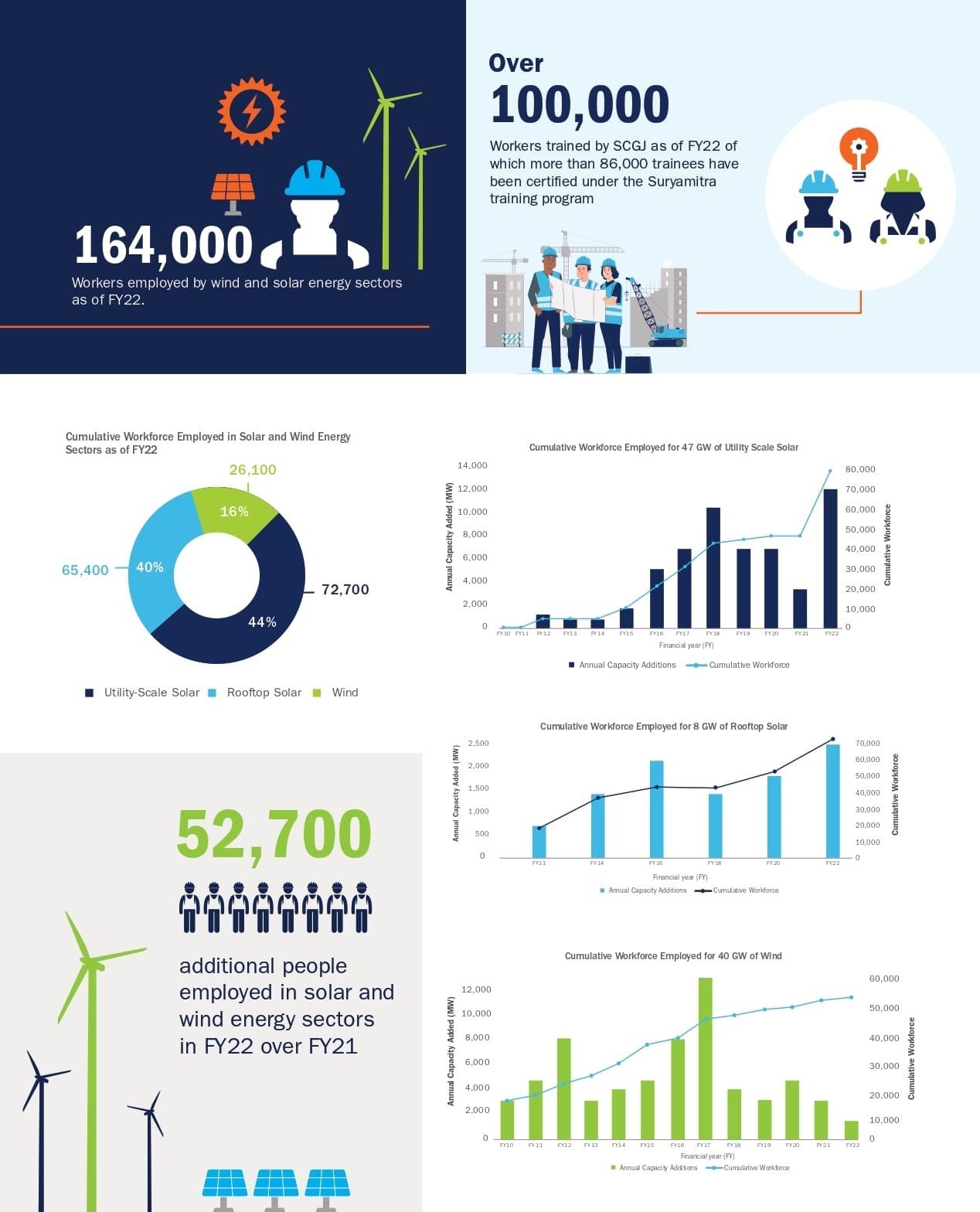



Suggested Citation: Tyagi, Akanksha, Akanksha Golchha, Deepak Rai, Arvind Poswal, Charu Lata, Sameer Kwatra, and Praveen Saxena. 2023. India's Expanding Clean Energy Workforce 2022 Update. Council on Energy, Environment and Water, Natural Resources Defense Council, and Skill Council for Green Jobs.
This report provides an updated analysis on direct jobs created from solar and wind energy sectors in India in the financial year 2022 (FY22), building on earlier analyses by the Council on Energy, Environment and Water (CEEW), the Natural Resources Defense Council (NRDC), and Skill Council for Green Jobs (SCGJ). It also introduces the employment and skilling insights of standalone battery energy storage system (BESS) deployment. Lastly, it provides information about updated training and skilling numbers from SCGJ across the renewable energy and green jobs’ sectors.
India updated its Nationally Determined Contributions (NDC) in 2022 to advance accomplishing its decarbonization goals by 2070. Within the updated NDC’s, meeting 50 percent of cumulative electric power installed capacity from non-fossil sources by 2030 is a leading step towards renewable energy deployment and subsequent emissions reduction. The renewable energy sector was visibly resilient after COVID-19 pandemic and has reached a cumulative installed capacity of 120 GW at the end of the year 2022. Since resumption of activities post COVID-19 restrictions, there has been significant momentum in the growth and pace of renewable energy deployment, and the expansion of specialized skilling initiatives to support capacity addition with gainful employment. It is essential to estimate skill gaps resulting from the advent of new and emerging clean energy technologies being deployed. In order to meet the progressive renewable energy capacity deployment by 2030, skilling initiatives needs to be aligned as per requisite demand.
This report provides an updated analysis on direct jobs created from solar and wind energy sectors in financial year 2022 (FY22), building on earlier analyses by the Council on Energy, Environment and Water (CEEW), the Natural Resources Defense Council (NRDC), and Skill Council for Green Jobs (SCGJ). It also introduces the employment and skilling insights of standalone battery energy storage system (BESS) deployment. Lastly, it provides information about updated trainings and skilling numbers from SCGJ across the renewable energy and green jobs’ sectors.
Employment trends in the solar and wind energy sectors FY 2022

Source: CEEW-NRDC Analysis, 2022

Enabling a Circular Economy in India’s Solar Industry

Community Solar for Advancing Power Sector Reforms and the Net-Zero Goals

Mapping India’s Residential Rooftop Solar PotentialA bottom-up assessment using primary data

Promoting the Use of LPG for Household Cooking in Developing Countries